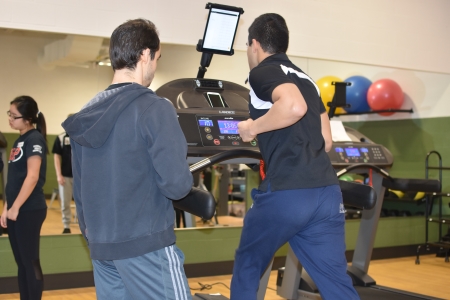This course focuses on learning the various assessments required for the CSEP exam: blood pressure, heart rate, handgrip, & mCAFT.
Target population: Adults (18-65), healthy
- Course Instructor: Lyndsay Fitzgeorge
- Lab Instructors: Lyndsay Fitzgeorge
- Lab Technician:
- Semester: Two
Lab Sections:
- Section 1:
- Section 2:
- Section 3:
- Section 4:
Practical Assessment Schedule
N.B. During the weeks involving practical assessments, students will continue to have lab class as scheduled and are expected to attend.
| Week | Skills Assessed |
|---|---|
| Week 8 | Blood pressure, heart rate, height, weight & waist circumference |
| Week 9 – 12 | mCAFT, YMCA cycle test, single-stage treadmill |
| Week 13 – 14 | Grip strength, sit and reach, push up, single-leg balance, vertical jump & back extension |
Lab Schedule
| Course: PHRE 5003 - High Performance Training | Movement Pattern: | Target: Quadriceps | Synergist(s): Gastrocnemius, Hamstrings |
| Exercise |  | ||
| Regressions: | Progressions: | ||
Return to My Course Home |
